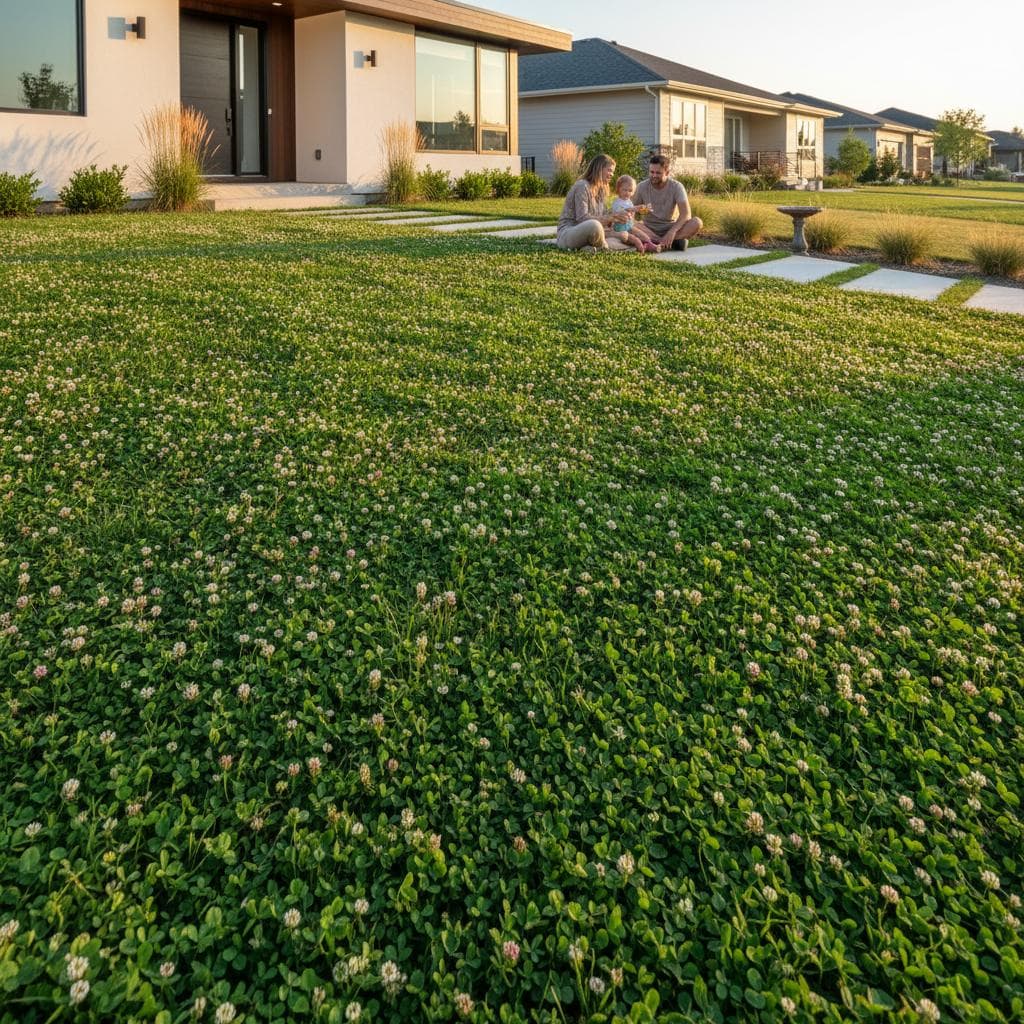Why Clover Lawns Outperform Traditional Grass and Secure HOA Approval
Sarah and Daniel sought a refined outdoor area for their suburban property that demanded less effort than a standard grass lawn. With demanding schedules that included weekend sports and extended work hours, they required a verdant, comfortable surface that proved functional. Their landscape designer recommended a clover lawn, an innovative approach that initially appeared unusual yet delivered an intelligent, sustainable outcome fully compliant with their homeowners association guidelines.
Understanding Clover Lawns
Clover lawns trace their origins to traditional ground covers, yet they experience renewed popularity in neighborhoods that prioritize visual appeal alongside ecological stewardship. Microclover, a fine-leafed form of white clover, forms a plush, compact layer of greenery that retains vitality across seasons. This variety presents a groomed appearance suitable for communal expectations while requiring substantially less irrigation and nutrient supplementation compared to conventional turf.
Sarah noted, "We desired a deliberate aesthetic, not an untamed one. The microclover resembles a conventional lawn, yet we avoid constant mowing and watering."
The prior grass expanse necessitated weekly trimming, consistent watering, and applications of synthetic weed controls. In comparison, the clover installation flourishes under reduced care. It inherently withstands common insects, preserves its rich pigmentation, and self-heals minor damages. Such attributes afford time-strapped residents greater opportunities to relax in their outdoor spaces rather than labor over them.
Securing HOA Approval for Clover Lawns
Homeowners frequently concern themselves with potential clashes between clover installations and local covenants. However, microclover's orderly look and steady coloration frequently satisfy association criteria for adequate vegetative coverage. It conveys an impression of deliberate upkeep, distinct from an unkempt field.
Associations generally emphasize three elements: pigmentation, stature, and consistency. Microclover fulfills each criterion effectively.
- Pigmentation: Its profound green tone endures steadily, even amid periods of limited rainfall.
- Stature: Growth remains compact, typically below four inches, which minimizes mowing demands.
- Consistency: Thick coverage inhibits sparse areas and curbs weed proliferation.
Green Terrain Studio presented visual documentation of finished microclover installations, accompanied by care protocols, to the association's evaluation committee. The committee granted approval promptly, citing the design's hydration efficiency and polished demeanor.
Practical Advantages of Clover Lawns
The upgraded lawn yields tangible daily and ecological rewards that the household experiences routinely.
- Reduced Water Expenses: Economies emerged in the initial month. The substrate holds hydration extendedly, and diminished watering schedules produced prompt fiscal relief.
- Absence of Synthetics: Free from nutrient additives or weed suppressants, the area poses reduced risks to young children and animals.
- Enhancement of Pollinators: Delicate white blossoms emerge at intervals, drawing honeybees and butterflies. For hosted events, residents trim the surface beforehand, curtailing visible flowers while upholding tidiness.
- Pleasant Tactile Quality: The clover's yielding consistency suits bare-footed activities, and it maintains lower temperatures under solar exposure.
Daniel observed, "We did not anticipate such comfort. It offers density with resilience, and the pet adores it."
To implement a similar transition, evaluate your soil composition through a basic pH test, aiming for neutrality between 6.0 and 7.0. Prepare the site by removing existing sod and incorporating organic matter for improved drainage. Sow microclover seeds at a rate of two to four pounds per thousand square feet in early spring or fall, then lightly rake and water to establish roots.
Integrating Clover into Long-Term Landscapes
Several months post-establishment, the clover lawn has reached full development. The residents dedicate increased time to outdoor pursuits, and adjacent properties inquire about the change. The association now distributes recommendations promoting microclover as a resource-conserving choice.
For Sarah and Daniel, this initiative evolved from a utilitarian choice into a prominent element of their residence's facade. The persistent vibrancy and level terrain harmonize with contemporary architectural details. It integrates fluidly with adjacent plantings of lavender, decorative grasses, and indigenous flowers, yielding a cohesive, undemanding garden scheme.
Green Terrain Studio tracks the installation within its ecological initiatives. The designer remarked, "This example demonstrates adherence to collective norms alongside ecological advancement. It involves selecting an intelligent alternative to conventional lawns, not forgoing their appearance."
Advancing Toward Sustainable Outdoor Spaces
This clover lawn's achievements indicate evolving perspectives on yard management among residents. Emphasis shifts from perpetual maintenance to enduring vitality and pleasure. In locales that reconcile aesthetics with accountability, microclover provides a viable route that gratifies visual and planetary needs alike.

